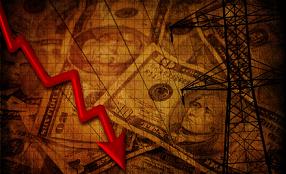Foreclosures and Mounting Unemployment: Signs of Slowdown in US Economy
Jobless benefits claims at six-month high

Reports released this week on initial applications for jobless benefits, bank seizures of foreclosed homes and retail sales all reflect a dramatic decline in US economic growth and growing social distress.
On Thursday, the Labor Department reported that first-time jobless claims rose by 2,000 last week to 484,000, the third weekly rise in the past month and the highest level in six months. As has been the case with virtually all US economic data in recent weeks, the figures defied the more optimistic forecasts of economists. They had predicted jobless filings would fall by 14,000.
The four-week moving average of unemployment benefits claims also rose, increasing by 14,250 to 473,500. Most economists believe that weekly initial claims above 400,000 reflect an unhealthy economy that is generating too few jobs to keep pace with the normal growth of the labor force.
According to the Financial Times, Joshua Shapiro, chief US economist at MFR, noted that the current level of claims is consistent with an economy that is shedding 200,000 jobs a month. Last week, the Labor Department reported that US payrolls shrank by 131,000 in July.
The jobless claims figures suggest that the jobless rate will likely rise above the current official level of 9.5 percent.
The Associated Press reported that Pierre Ellis, an economist at Decision Economics, wrote in a note to clients that Thursday’s unemployment claims report “represents a very adverse turn in the labor market, threatening income growth and consumer spending.”
The social impact of the worsening jobs crisis was indicated by Thursday’s report on home foreclosures. The real estate data firm RealtyTrac reported that lenders seized 92,858 homes in July, up 9 percent from June and 6 percent from July of 2009. The July figure was the second highest monthly total since RealtyTrac began compiling records in January of 2005.
The company noted that foreclosures and home repossessions are rising particularly rapidly in the Northwest and Midwest. The number of homes seized by lenders doubled in 19 states and more than tripled in 7 of them.
In Idaho, home seizures soared 822 percent in the second quarter of this year. The staggering impact of the economic crisis in that state is reflected as well in its jobless figures. The official unemployment rate in Idaho in July was 8.2 percent. In July of 2007 it was 2.9 percent.
Michael Ferguson, Idaho’s chief economist, told Bloomberg News, “This is an off-the-chart financial event. I wasn’t around for the Depression, but in the last half century there has been nothing like this.”
Rick Sharga, vice president of marketing at RealtyTrac, said of the rate of home foreclosures and repossessions, “The numbers are exploding due to unemployment and economic displacement. We will see them get a lot worse unless we see some job creation.”
On Friday, the Commerce Department released its report on retail sales for July, confirming that consumer spending has fallen back over the past several months and is likely to remain stagnant. Overall, retail sales rose by 0.4 percent from the June level. While this was the first rise in three months, it was lower than economists’ projections and considered a bad sign for the back-to-school shopping period.
Most retailers reported declining sales. They were down 1 percent at department stores and also dropped at specialty clothing stores, furniture outlets, hardware stores and appliance stores. The overall figure rose only due to relatively strong auto and gasoline sales.
According to the Associated Press, Jennifer Lee, senior economist at BMO Capital Markets, said of the retail sales report: “There is only one thing for sure—economic momentum has slowed.” AFP quoted analyst Aneta Markowska of Societe Generale as saying the retail sales trend “underscores the loss of momentum in consumer spending, with no signs of a turnaround to speak of.”
The jobless claim, home seizure and retail sales reports followed similarly grim economic data released earlier in the week. That included a Commerce Department report showing a decline in personal income in all but 5 of 52 US metropolitan regions and another Commerce report showing a drop in wholesale inventories and sales.
Last week, the American Bankruptcy Institute reported a 9 percent rise in personal bankruptcies in July as compared to June, and noted that one in every 125 American households has filed for bankruptcy.
On Tuesday, the Federal Reserve Board acknowledged that US economic growth has slowed over the past several months and admitted that growth going forward would fail to meet its previous forecasts. The only new action the central bank took was to resume, on a small scale, its purchase of Treasury securities.
This will have no significant impact on job creation. The effect of the Fed’s posture is to maintain high unemployment for months and years to come. This corresponds to the policy of the Obama administration, which has abandoned even its inadequate stimulus proposals and shifted more directly toward the imposition of social cuts and austerity measures.
The administration’s occasional rhetoric about creating jobs cannot conceal the reality of a class-war policy tailored to the interests of the corporate and financial elite, which is using mass unemployment to blackmail workers into accepting wage and benefit cuts and speedup.
NEW BOOK FROM GLOBAL RESEARCH
The Global Economic Crisis
Michel Chossudovsky
Andrew G. Marshall (editors)

